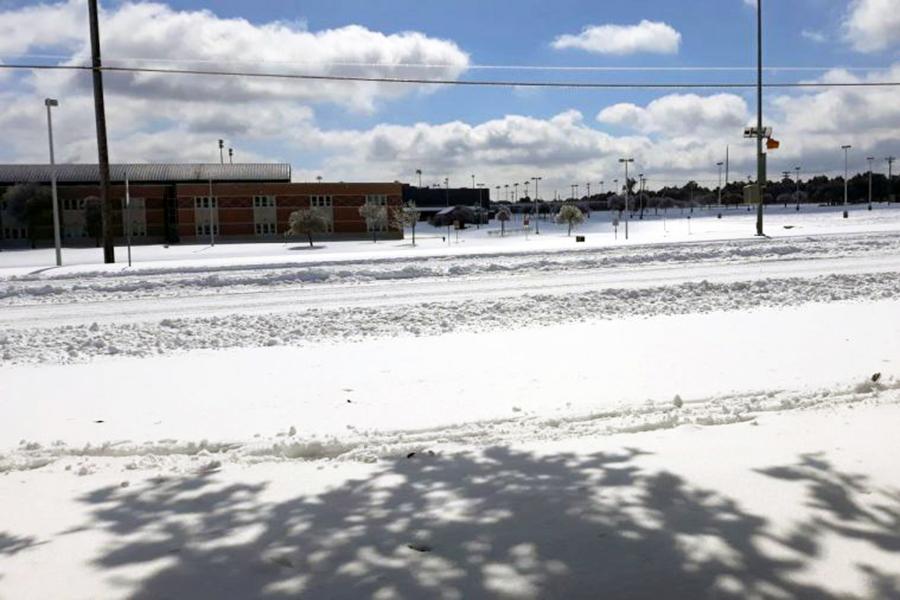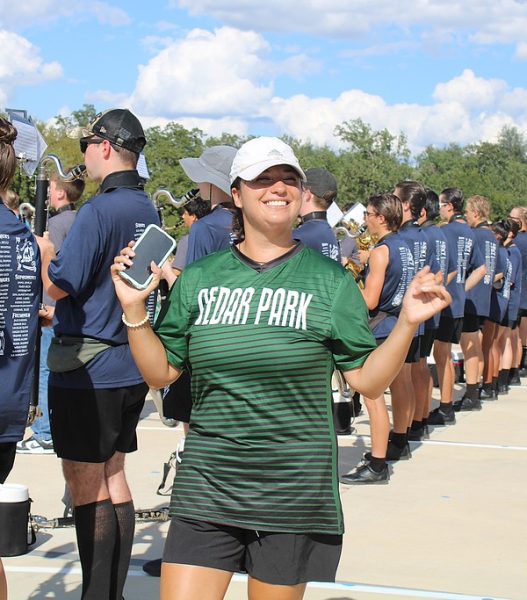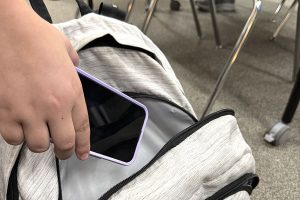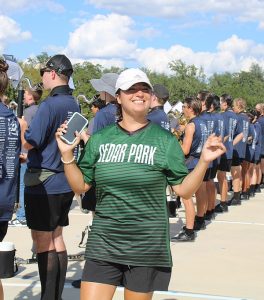The Big Freeze
Polar Vortex Creates Low Temperatures in Texas
The CPHS campus covered in snow. On Feb. 14, Leander School District called classes off for a period that lasted over a week as students and teachers suffered power outages. “The water supply to my house was cut off for two days,” sophomore Caleb Taylor said. “Power came back on the midnight of Feb. 16.”
March 4, 2021
Cedar Park was engulfed in cold weather from Feb. 12-22, with temperatures dipping into the single digits. This has been amid a polar vortex that has created record lows across America.
Some Texans on Feb. 12 walked out and saw ice covering the plants, cars, and outdoor patios. Students like sophomore Ryan Green, meanwhile, first noticed the ice when they looked out the window as they were preparing for school.
“I was making breakfast and wondering why the weather felt so cold around me,” Green said. “This is why I decided to look outside and saw ice covering all the trees and grass in my backyard. We had a snow day in January, but I’ve never seen weather like this before.”
Questions floated around as to whether this would affect school, but classes continued as normal on Thursday and Friday for virtual students. For in-person students, it was the same schedule, but many had to go back home in cars and call off their previously-marked outdoor athletic events. Ice that had formed on the school’s scenery had also weighed down and broken the trunks of a few of the trees.
“When I went to school, it was really cool how ice had formed on almost everything,” Green said. “Almost all of the bushes were laying flat on the ground. It was hard to walk outside because of how slippery it had become.”
Outside CPHS, the streets became slippery. Normal errands, like going to the supermarket or picking up kids at school were dangerous risks that require extra caution for kids and parents alike. It was advised to stay indoors and exercise the utmost caution when walking, biking, or driving to any location.
“Cars are going at about two or three miles per hour at maximum,” elementary school teacher Gary Kolenbrander said. “I went out to buy milk and eggs, and it took about 40 minutes. It’s too dangerous on the road to make any big trips.”
As the polar vortex continued, it escalated to around six inches of snow falling in parts of Williamson County on the night of Feb. 14, only a fraction of widespread snowing in Texas, a state that typically averages about 0.1 inches of snowfall each year. Many Texans woke up the next morning experiencing major power outages and shortages of water due to freezing pipes.
The power outages can be attributed to the management of Texas’ energy grid. Most of the country, attached to either the Eastern or Western power grid, sustained energy through the storm due to federal regulations and emergency power streaming in from other grids. However, Texas has its own grid, the Texas Interconnection, managed by the Electric Reliability Council of Texas, and was forced to employ “rolling blackouts” to conserve energy.
“I remember that for an entire two days, the water supply to our house was cut off,” sophomore Caleb Taylor said. “My family decided to take me to a friend’s house while they sorted out the issue, but there wasn’t much to do. Power came back on around midnight on Tuesday.”
Road conditions remained equally hazardous as school was canceled the following week and a half. Even after school resumed for most LISD students on Feb. 24, there was a significant amount of water damage done to areas of the CPHS building. It also affected the grades of students, as the end of the 6-week grading cycle came right on the heels of the power outage. The deadline was forced to be extended to Feb. 25.
“I had a major power outage that lasted for the entire week.” art teacher Leslie Landers said. “Even if students emailed me, asking to update any of their late grades, I received none of them until I was able to go back to school and gain an internet connection.”



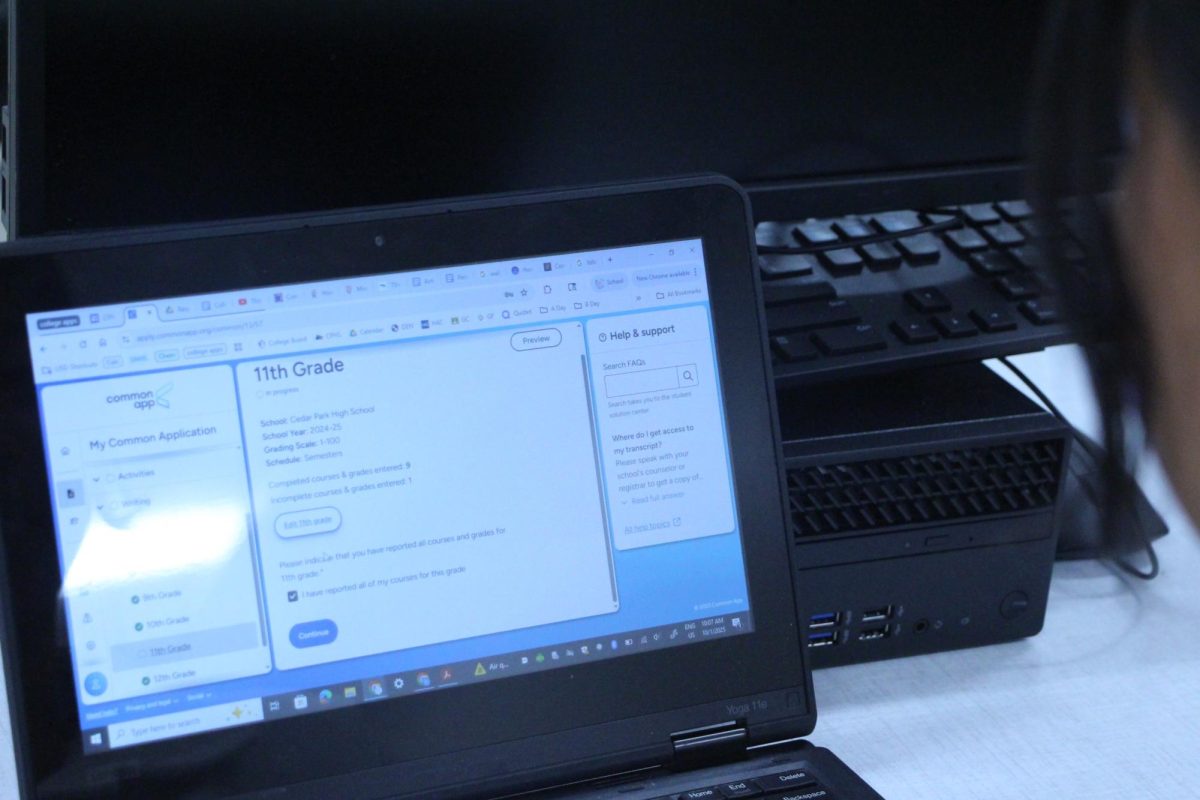


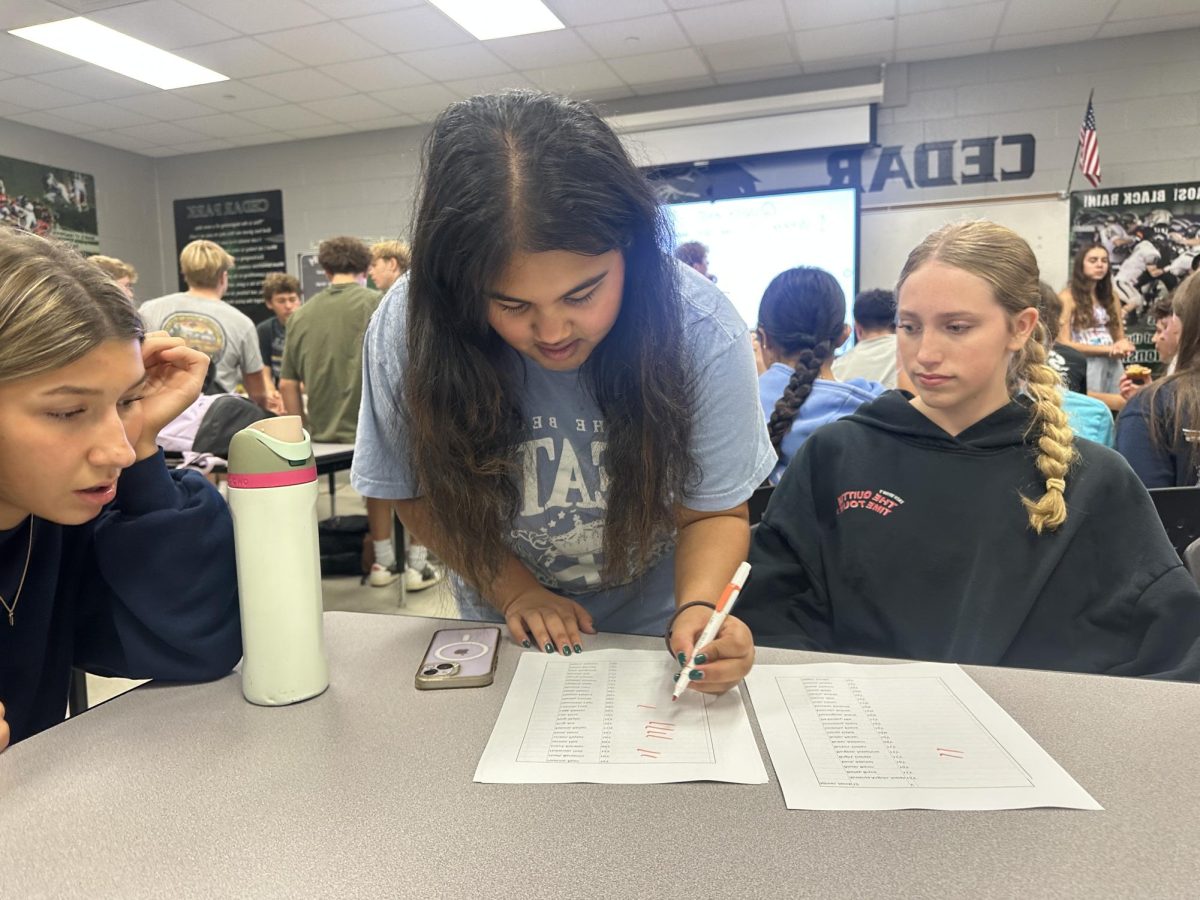



![Broadcast, yearbook and newspaper combined for 66 Interscholastic League Press Conference awards this year. Yearbook won 43, newspaper won 14 and broadcast took home nine. “I think [the ILPC awards] are a great way to give the kids some acknowledgement for all of their hard work,” newspaper and yearbook adviser Paige Hert said. “They typically spend the year covering everyone else’s big moments, so it’s really cool for them to be celebrated so many times and in so many different ways.”](https://cphswolfpack.com/wp-content/uploads/2025/05/edited-ILPC.jpg)



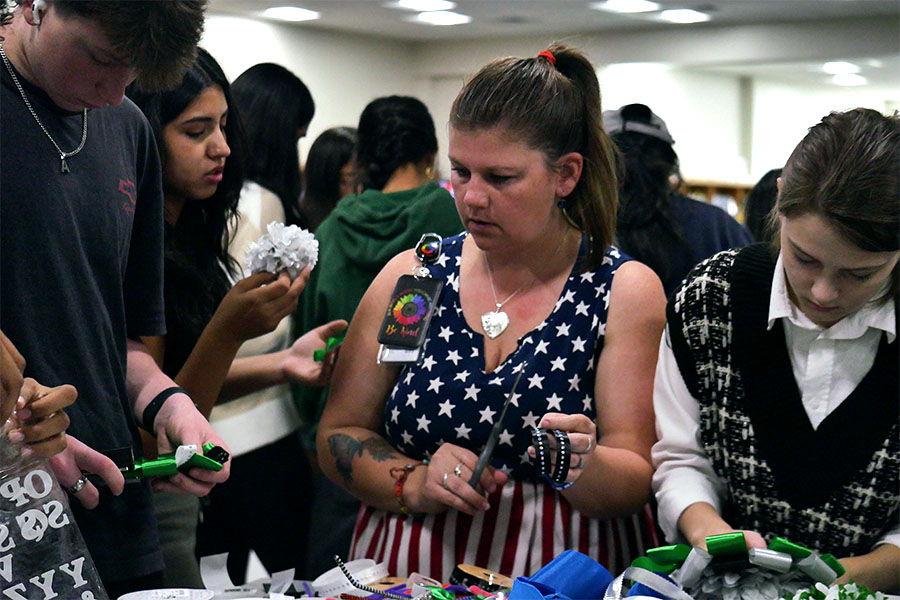

![Looking down at his racket, junior Hasun Nguyen hits the green tennis ball. Hasun has played tennis since he was 9 years old, and he is on the varsity team. "I feel like it’s not really appreciated in America as much, but [tennis] is a really competitive and mentally challenging sport,” Nguyen said. “I’m really level-headed and can keep my cool during a match, and that helps me play a bit better under pressure.” Photo by Kyra Cox](https://cphswolfpack.com/wp-content/uploads/2025/09/hasun.jpg)

![Bringing her arm over her head and taking a quick breath, junior Lauren Lucas swims the final laps of the 500 freestyle at the regionals swimming competition on date. Lucas broke the school’s 18-year-old record for the 500 freestyle at regionals and again at state with a time of 4:58.63. “I’d had my eye on that 500 record since my freshman year, so I was really excited to see if I could get it at regionals or districts,” Lucas said. “ State is always a really fun experience and medaling for the first time was really great. It was a very very tight race, [so] I was a bit surprised [that I medaled]. [There were] a lot of fast girls at the meet in general, [and] it was like a dogfight back and forth, back and forth.” Photo by Kaydence Wilkinson](https://cphswolfpack.com/wp-content/uploads/2025/03/Kaydence-2.7-23-edit-2.jpg)
![As her hair blows in the wind, senior Brianna Grandow runs the varsity girls 5K at the cross country district meet last Thursday. Grandow finished fourth in the event and led the varsity girls to regionals with a third place placement as a team. “I’m very excited [to go to regionals],” Grandow said. “I’m excited to race in Corpus Christi, and we get to go to the beach, so that’s really awesome.” Photo by Addison Bruce](https://cphswolfpack.com/wp-content/uploads/2025/10/brianna.jpg)











